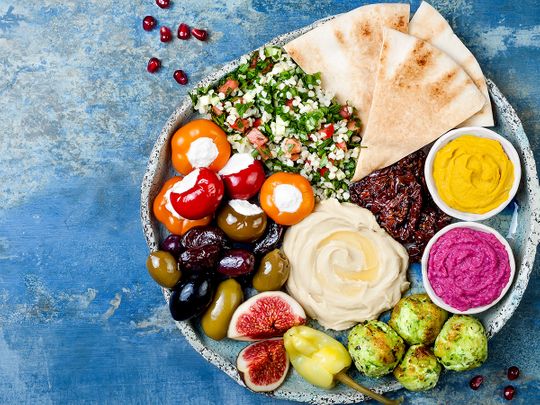Introduction: Lebanese cuisine in a nutshell
Lebanese cuisine is a culmination of Mediterranean flavors and Middle Eastern spices. It is characterized by the use of fresh herbs, spices, vegetables, fruits, and meats. Lebanese cuisine is known for its diversity and is influenced by the cuisine of the Levant, Ottoman Empire, and French cuisine.
Lebanese cuisine comprises a rich selection of vegetarian, meat-based, and seafood dishes. The use of olive oil, lemon juice, garlic, and onion is prevalent in most Lebanese dishes. Lebanese cuisine has gained significant popularity worldwide, with Lebanese restaurants and cafes being found in major cities across the globe.
Culinary influences on Lebanese cuisine
Lebanese cuisine has been influenced by various cultures and civilizations throughout history. The cuisine of the Levant, which includes Syria, Palestine, Jordan, and Lebanon, has had a significant impact on Lebanese cuisine. The Ottoman Empire, which ruled Lebanon for over four centuries, also had an impact on Lebanese cuisine.
Lebanese cuisine was further influenced by French cuisine, during the French Mandate period from 1920 to 1943. The French introduced new ingredients and cooking techniques, such as the use of butter and cream in Lebanese dishes.
Regional variations in Lebanese cuisine
Lebanese cuisine varies regionally, with each region having its own specialties and flavors. The cuisine of northern Lebanon is known for its hearty meat-based dishes, such as kibbeh, a dish made of minced meat and bulgur wheat. The use of pomegranate molasses, sumac, and parsley is prevalent in northern Lebanese dishes.
The cuisine of southern Lebanon, on the other hand, is known for its seafood dishes, such as grilled fish and shrimp. The use of garlic, lemon juice, and olive oil is prominent in southern Lebanese cuisine. The coastal region of Lebanon also offers a variety of mezze, which are small plates of appetizers, such as hummus, baba ghanoush, and tabbouleh.
Northern Lebanon: specialties and flavors
The cuisine of northern Lebanon is characterized by its meat-based dishes, such as kibbeh, which is made of minced meat, bulgur wheat, and spices. Another popular dish from northern Lebanon is makanek, a type of sausage made of lamb or beef and flavored with cinnamon and other spices. The cuisine of northern Lebanon also uses a lot of pomegranate molasses, which gives dishes a sweet and sour flavor.
Southern Lebanon: dishes and cooking techniques
The cuisine of southern Lebanon is known for its seafood dishes, such as grilled fish and shrimp. The use of garlic, lemon juice, and olive oil is prominent in southern Lebanese cuisine. The coastal region of Lebanon also offers a variety of mezze, which are small plates of appetizers, such as hummus, baba ghanoush, and tabbouleh. The cuisine of southern Lebanon also features dishes such as fattoush, a salad made of fresh vegetables, herbs, and pita chips, and shawarma, a sandwich made of marinated meat that is roasted on a spit.
Conclusion: the diversity of Lebanese cuisine
Lebanese cuisine is a diverse and flavorful cuisine, influenced by various cultures and civilizations throughout history. Lebanese cuisine varies regionally, with each region having its own specialties and flavors. From the hearty meat-based dishes of northern Lebanon to the seafood dishes of southern Lebanon, Lebanese cuisine offers a wide range of delicious dishes that are enjoyed by people all over the world.

